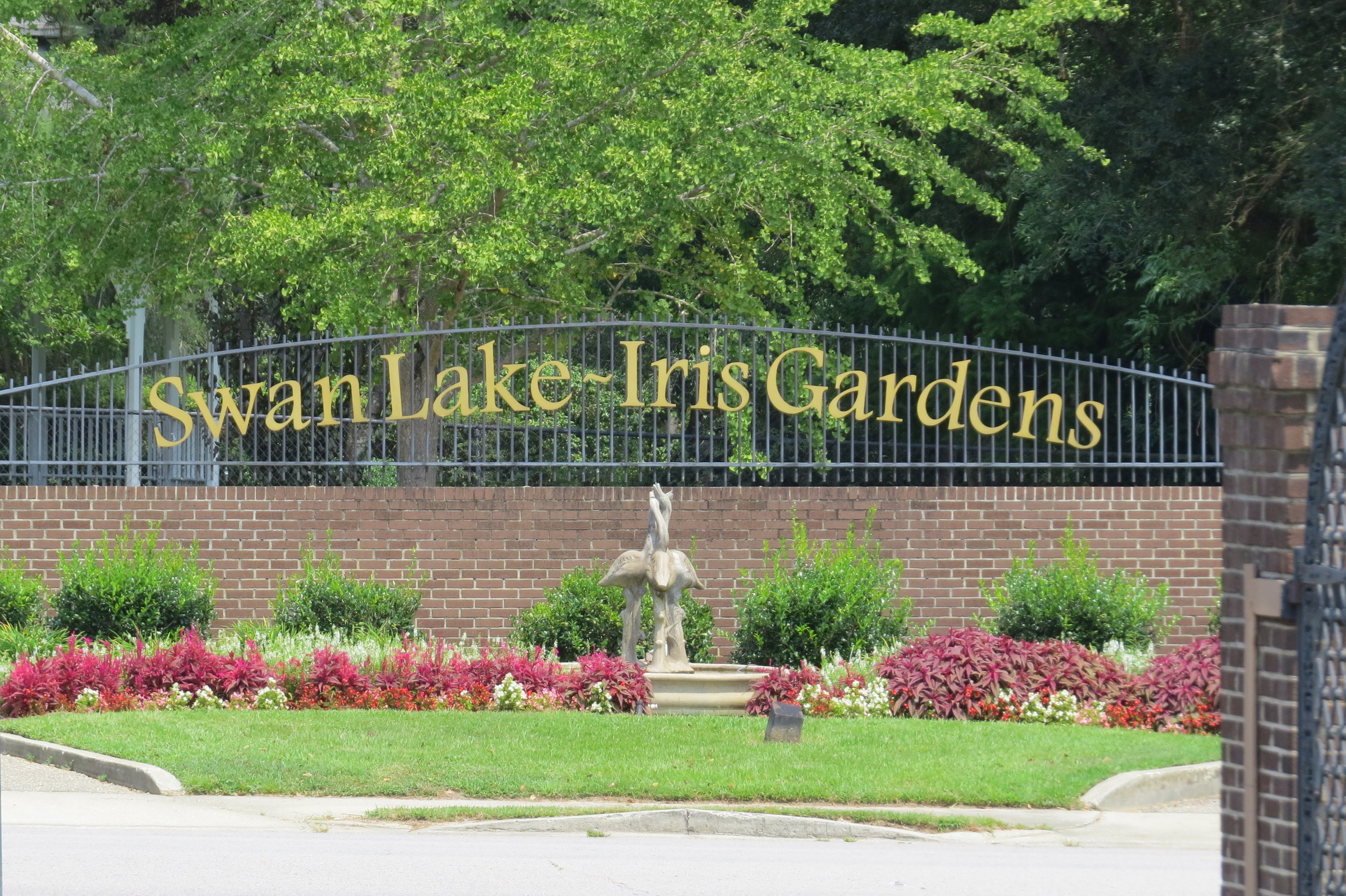Swan Lake Iris Gardens – Sumter, South Carolina
/Mute swan at Swan Lake Iris Gardens, Sumter, SC
Sometimes we stumble upon places that we had no intention of visiting nor ever heard about before and find a gem … Swan Lake Iris Gardens in Sumter, SC is one of them. In searching for an eclipse viewing venue in Sumter this past week, we stopped by the Swan Lake Iris Gardens and were so impressed, we returned a second time to wander around and spend more time there.
It’s the wrong time of the year for irises unfortunately. We read that around the end of May, some 120 varieties of iris bloom … the most intensive planting of Japanese iris in the USA … in time for the local Iris Festival. Though we missed the iris, we certainly did not miss the swans. All eight known species of swans in the world are in residence and we spotted several as they swam gracefully on the lake. Trying to distinguish one species from the other has been a challenge. The differences are sometimes quite subtle.
Cypress trees dot the lake and provide an impressive setting for the multitude of swans. Shaded, tree-lined paths meander around the lake. Watching the black swans made us think of Australia to which they’re native.
Cicadas were buzzing loudly as we wandered. Brightly colored dahlias and gerber daisies attracted butterflies and bees in the Butterfly Garden. Dragonflies darted by our noses ... in a blur of iridescent rainbow hues. There’s even a Chocolate Garden for flowers and shrubs that have a chocolate scent or chocolate in their name. Pretty clever.
Interesting sculptures are scattered around the grounds. Some whimsical and some intriguing in their detail and size, like the 18-foot stainless Recovery Wing by Grainger McKoy.
Recovery Wing by Grainger McKoy
Across a covered bridge overpass on the other side of the road there’s a huge, thick cypress grove in a swampy area where swans can pretty much escape from the obtrusive eyes of the thousands of visitors that visit the park each year. It gave us an eerie, primordial kind of feeling with old man’s beard (Spanish moss) hanging from the trees and we thought it might make a perfect venue for scary walks on dark October nights.
A cypress swamp provides a protected haven for the swans.
It’s not just swans though … we saw lots of turtles, an anhinga, ducks, Canada geese and even a swan goose or two.
Lots of birds were hanging out at the feeding troughs checking out the free snacks.
So a few new swan facts we learned that I just can’t wait to share (and will, most probably, soon forget) …
- There are eight species of swans in the world although Bewick’s is sometimes considered a subspecies of the tundra swan.
- The swan goose is a rare large goose with a natural breeding range in inland Mongolia, northernmost China, and southeastern Russia.
- Swans can have more than 20,000 feathers … more than any other species
- All unmarked mute swans in open water in England are considered property of the Crown and they’re counted each year in the Thames in a ceremony called “swan upping” … conducted by the Queen’s Swan Uppers, of course.
- Swans have more neck vertebra than a giraffe … go figure!
- A male swan is a cob, a female is a pen and a baby is a cygnet.
- Cygnophobia or kiknophobia is a fear of swans.
- A group of swans in the wild is a herd whereas a group in captivity is a fleet.
- From Wiki … swans and geese are the largest members of the duck family, and swans are among the largest of all flying birds.
- Black swans can still be hunted in the Chatham Islands of New Zealand. Not sure if they taste like chicken though … just kidding … really, I’m just kidding!
Okay … enough swan talk. Tomorrow we talk boat!

















